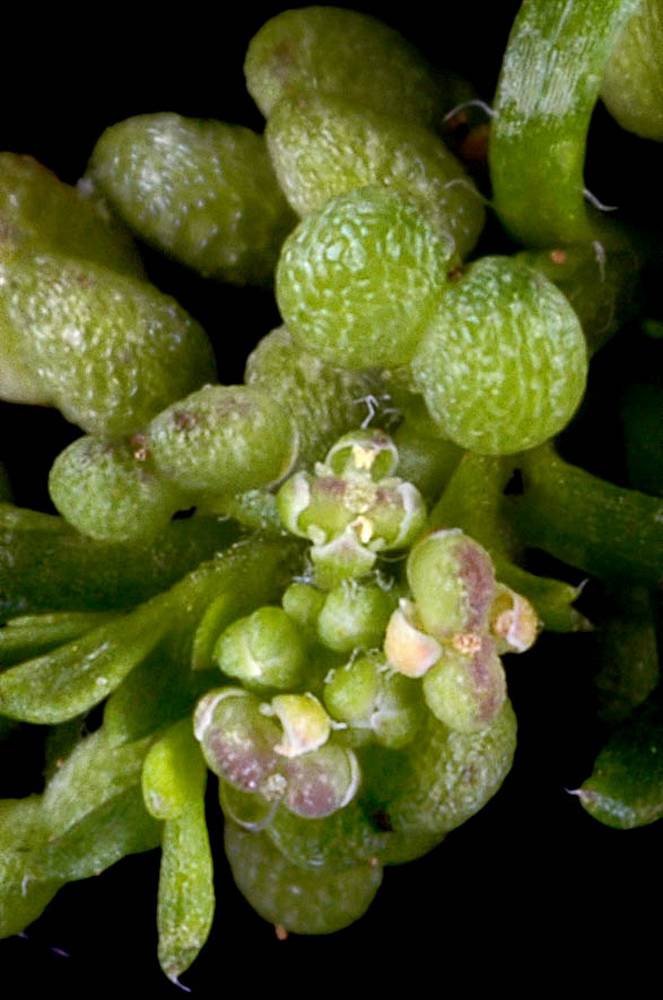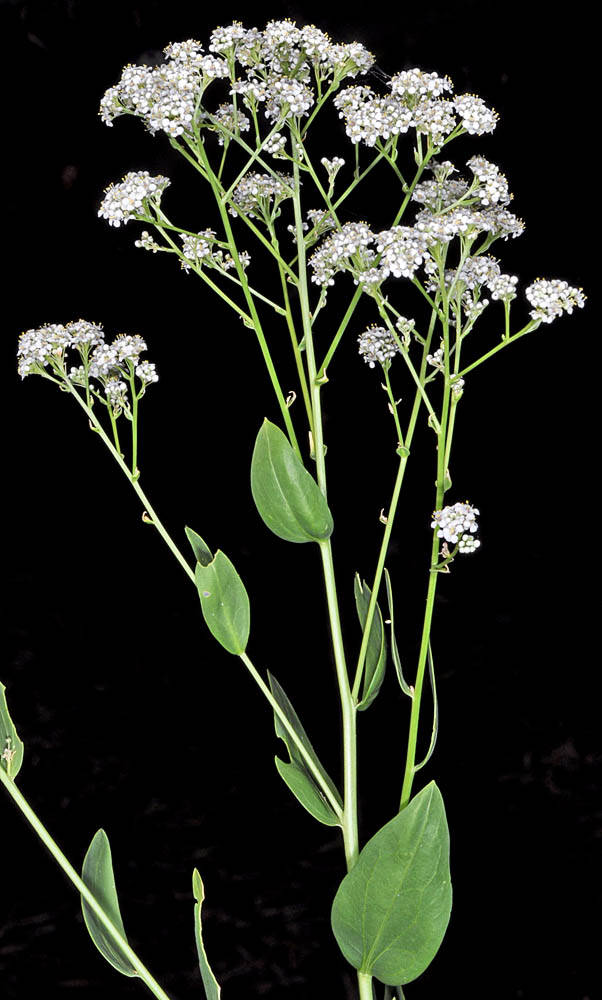Lepidium didymum
Lepidium latifolium
lesser swinecress, lesser wartcress
broad-leaved peppergrass, broad-leaved pepperweed, perennial pepperweed
often decumbent, 1–4.5(7) dm.
(2)3.5–12(15) dm.
not rosulate, 1–6(8) cm, 1- or 2-pinnatisect;
lobes entire or dentate, sometimes deeply lobed;
petioles 0.5–4(6) cm.
not rosulate, elliptic-ovate to oblong; (2)3.5–15(25) cm × (5)15–50(80) mm; leathery;
margins entire or serrate;
petioles 1–9(14) cm.
similar to basal, 1.5–3.5(4.5) × 0.5–1.2 cm, bases not auriculate, petiolate to subsessile.
oblong to elliptic-ovate or lanceolate; (1)2–9(12) cm × 3–45 mm, bases not auriculate;
margins serrate or entire, sessile or petiolate.
rachises glabrous or pubescent with straight cylindrical trichomes, fruiting pedicels divaricate to horizontal; terete; straight or slightly recurved, 1.4–2.5(4) mm, glabrous or sparsely pubescent adaxially.
rachises glabrous or puberulent with straight cylindrical trichomes, fruiting pedicels ascending to divaricate; terete; straight or curved, 2–5(6) mm, glabrous or puberulent adaxially.
sepals caducous, 0.5–0.7(0.9) mm;
petals elliptic to linear, 0.4–0.5 × ~0.1 mm, white;
stamens 2; median;
styles absent or obsolete, included in apical notch.
sepals caducous, 1–1.4 mm;
petals obovate, 1.8–2.5 × (0.8)1–1.3 mm, white;
stamens 6;
styles 0.05–0.15 mm, slightly exserted beyond apical notch.
indehiscent, didymous, 1.3–1.7 × 2–2.5 mm; apical notch 0.2–0.4 mm deep;
valves thick, rugose, glabrous, strongly veined; wingless.
dehiscent, oblong-elliptic, broadly ovate or suborbicular; (1.6)1.8–2.4(2.7) × 1.3–1.8 mm; apical notch absent or rarely to 0.1 mm;
valves smooth, glabrous or sparsely pilose, not veined; wingless.
ovate, 1–1.2 × 0.7–0.8 mm;
cotyledons incumbent.
oblong; (0.8)1–1.2 × 0.6–0.9 mm;
cotyledons incumbent.
=32.
=24.
Lepidium didymum
Lepidium latifolium
Disturbed areas, fields, pastures. Flowering May–Oct. 0–300 m. Est, WV. CA, WA; north to British Columbia, eastern Canada and US, southern US; nearly worldwide. Exotic.
Saline meadows, streambanks, fields, grasslands, disturbed places, slopes, disturbed areas, sagebrush and pinyon-juniper communities, barren hillsides, edge of marshes. Flowering May–Sep. 0–1400 m. BW, Col, ECas, Est, Lava, Owy, Sisk, WV. CA, ID, NV, WA; western North America, widely scattered eastern North America; Africa, Asia, Europe. Exotic.
Ihsan Al-Shehbaz
Ihsan Al-Shehbaz
- Local floras:
BC,
CA,
OR,
WA
- Local Web sites:
CalFlora,
CalPhotos,
Flora NW,
PNW Herbaria
WildflowerSearch
iNaturalist (observations)
USDA Plants Database
- LBJ Wildflower Center
- SEINet
- Plants of the World Online
- Encyclopedia of Life
- Wikipedia
- Google Image Search
- Local floras:
BC,
CA,
OR,
WA
- Local Web sites:
CalFlora,
CalPhotos,
Flora NW,
PNW Herbaria
WildflowerSearch
iNaturalist (observations)
USDA Plants Database
- LBJ Wildflower Center
- SEINet
- Plants of the World Online
- Encyclopedia of Life
- Wikipedia
- Google Image Search





